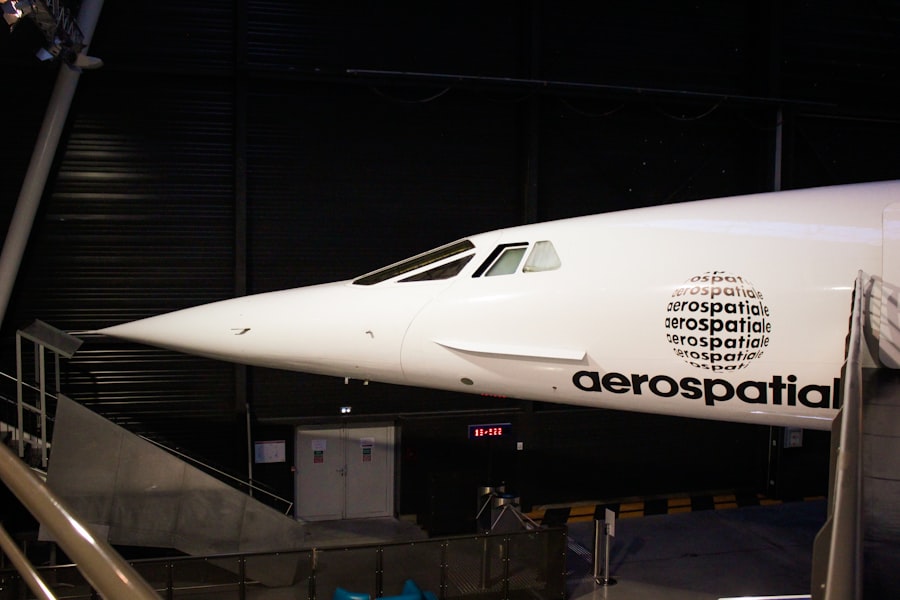The aerospace industry is a multifaceted sector that encompasses the design, development, and production of aircraft, spacecraft, and related systems and equipment. It is a critical component of the global economy, contributing significantly to job creation and technological advancement. The industry can be broadly divided into two main segments: commercial aviation and defense.
Commercial aviation focuses on the manufacture of passenger and cargo aircraft, while the defense sector is concerned with military aircraft, missiles, and space exploration technologies. The interplay between these segments often drives innovation, as advancements in one area can lead to breakthroughs in another. Aerospace is characterized by its complex supply chains and stringent regulatory requirements.
Companies in this sector must navigate a labyrinth of international regulations, safety standards, and environmental considerations. The industry is also heavily influenced by geopolitical factors, economic conditions, and technological advancements. For instance, the rise of unmanned aerial vehicles (UAVs) has transformed both commercial and military applications, leading to new business opportunities and challenges.
Understanding these dynamics is crucial for businesses looking to establish themselves in the aerospace market, as they must adapt to rapidly changing technologies and customer demands.
Key Takeaways
- The aerospace industry is a complex and highly regulated sector that requires a deep understanding of its unique challenges and opportunities.
- Identifying target markets within the aerospace industry requires a thorough analysis of customer needs, industry trends, and competitive landscape.
- Leveraging digital marketing is crucial for reaching and engaging with key decision-makers and influencers in the aerospace industry.
- Building relationships with industry leaders can provide valuable insights, partnerships, and opportunities for growth within the aerospace sector.
- Showcasing innovation and technology is essential for differentiating your brand and staying competitive in the aerospace industry.
Identifying Target Markets
Identifying target markets within the aerospace industry requires a nuanced understanding of various customer segments and their specific needs. The commercial aviation sector, for example, includes airlines, cargo carriers, and charter services, each with distinct requirements regarding aircraft performance, fuel efficiency, and operational costs. Airlines are increasingly focused on sustainability and reducing their carbon footprint, which has led to a growing demand for more fuel-efficient aircraft.
In contrast, cargo carriers prioritize payload capacity and reliability, necessitating different design considerations. On the defense side, target markets can include government agencies, military branches, and private defense contractors. Each of these entities has unique procurement processes and budget constraints.
For instance, military contracts often involve lengthy bidding processes and require compliance with strict security protocols. Understanding the intricacies of these markets allows companies to tailor their offerings effectively. Additionally, emerging markets in regions such as Asia-Pacific and the Middle East present new opportunities for growth as these areas invest heavily in expanding their aviation infrastructure.
Leveraging Digital Marketing

In an era where digital presence is paramount, leveraging digital marketing strategies is essential for aerospace companies aiming to reach their target audiences effectively. Digital marketing encompasses a range of tactics including search engine optimization (SEO), pay-per-click advertising (PPC), social media engagement, and content marketing. By optimizing their online presence, aerospace firms can enhance visibility among potential customers and stakeholders.
For instance, utilizing SEO techniques can help companies rank higher in search engine results when potential clients search for specific aerospace solutions. Social media platforms also play a pivotal role in digital marketing strategies. Aerospace companies can use platforms like LinkedIn to connect with industry professionals, share insights about their innovations, and engage in discussions about market trends.
Additionally, targeted advertising on social media can help reach niche audiences that traditional marketing methods may overlook. By creating compelling content that resonates with their audience—such as case studies showcasing successful projects or infographics detailing industry trends—companies can establish themselves as thought leaders in the aerospace sector.
Building Relationships with Industry Leaders
| Metrics | Data |
|---|---|
| Number of industry leaders contacted | 25 |
| Response rate from industry leaders | 60% |
| Number of meetings scheduled | 10 |
| Number of collaborations initiated | 5 |
Building relationships with industry leaders is a strategic imperative for companies operating in the aerospace sector. Collaborations with established players can provide access to valuable resources, expertise, and networks that are crucial for growth. For instance, partnerships with major aircraft manufacturers or defense contractors can facilitate knowledge sharing and open doors to new business opportunities.
These relationships often lead to joint ventures or collaborative projects that leverage the strengths of each partner. Networking at industry conferences and events is an effective way to forge these connections. Engaging with key stakeholders—such as government officials, military representatives, and executives from leading aerospace firms—can lead to fruitful partnerships.
Additionally, participating in industry associations or consortiums can enhance credibility and provide platforms for collaboration on research and development initiatives. By fostering these relationships, companies can position themselves strategically within the aerospace ecosystem and gain insights into emerging trends that may impact their business.
Showcasing Innovation and Technology
Innovation is at the heart of the aerospace industry, driving advancements that enhance safety, efficiency, and performance. Companies must actively showcase their technological innovations to differentiate themselves from competitors and attract potential clients. This can be achieved through various channels such as press releases, product demonstrations, and participation in industry forums.
For example, a company developing cutting-edge propulsion systems could host a live demonstration at an aerospace expo to highlight its capabilities. Moreover, investing in research and development (R&D) is crucial for staying ahead in this competitive landscape. Companies that prioritize R&D are better positioned to introduce groundbreaking technologies that address current challenges in the industry—such as reducing emissions or improving flight safety.
By publishing white papers or case studies that detail their R&D efforts and outcomes, firms can establish themselves as leaders in innovation while also contributing to the broader discourse on technological advancements within aerospace.
Creating Engaging Content

Creating engaging content is essential for capturing the attention of potential customers and stakeholders in the aerospace industry. High-quality content not only informs but also inspires trust and credibility among audiences. Companies can utilize various formats such as blogs, videos, podcasts, and webinars to convey their messages effectively.
For instance, a video series showcasing behind-the-scenes footage of aircraft manufacturing processes can provide insights into the complexity of production while highlighting a company’s commitment to quality. Furthermore, storytelling plays a vital role in content creation. By sharing success stories or testimonials from satisfied clients, companies can illustrate the real-world impact of their products or services.
This approach not only humanizes the brand but also resonates with potential customers who may be seeking solutions to similar challenges. Engaging content should also be tailored to different audience segments; for example, technical articles may appeal to engineers while more general overviews could attract business executives looking for strategic partnerships.
Utilizing Trade Shows and Events
Trade shows and industry events are invaluable opportunities for aerospace companies to showcase their products and services while networking with potential clients and partners. These gatherings often attract key decision-makers from various sectors within the aerospace industry, making them ideal venues for establishing connections and generating leads. Companies can set up booths to display their latest innovations or participate in panel discussions to share insights on industry trends.
Moreover, trade shows provide a platform for direct engagement with customers. Demonstrating products in person allows potential clients to experience the technology firsthand and ask questions directly to company representatives. This level of interaction can significantly influence purchasing decisions.
Additionally, participating in workshops or seminars at these events can position companies as thought leaders while providing valuable educational content to attendees.
Measuring and Analyzing Marketing ROI
Measuring and analyzing marketing return on investment (ROI) is crucial for understanding the effectiveness of marketing strategies within the aerospace sector. Companies must establish clear metrics to evaluate the success of their campaigns—whether through lead generation, brand awareness, or sales conversions. Utilizing analytics tools can help track key performance indicators (KPIs) such as website traffic, social media engagement rates, and conversion rates from digital marketing efforts.
Regularly assessing marketing ROI enables companies to make data-driven decisions about where to allocate resources effectively. For instance, if a particular digital marketing campaign yields high engagement but low conversion rates, it may indicate a need for adjustments in messaging or targeting strategies. Conversely, successful campaigns can be scaled up or replicated across different markets or product lines.
By continuously measuring performance against established goals, aerospace companies can refine their marketing approaches to maximize impact and drive growth in an increasingly competitive landscape.


